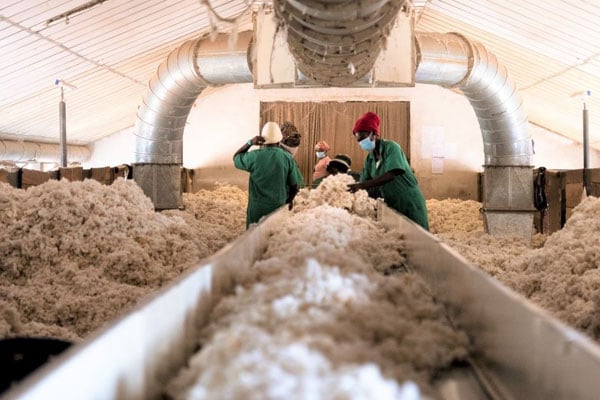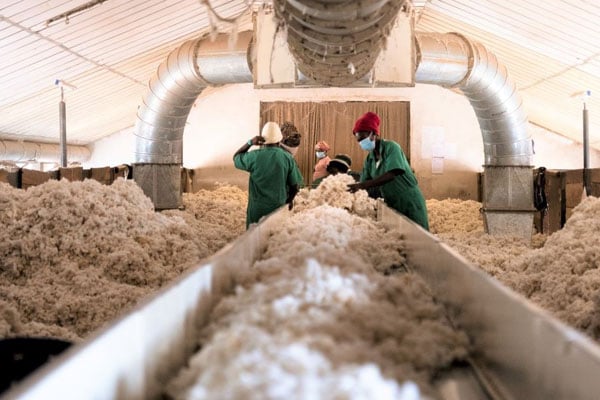Prime
Only 10% of Uganda’s cotton is processed

Workers in a cotton factory. PHOTO/ FILE
What you need to know:
- A Ministerial Policy Statement for 2022/23 financial year indicates that as of June 2022 Uganda was producing 68,913 bales, which, although was a 36 percent increase from the 50,709, was far lower than the planned targets.
Only 10 percent of Uganda’s cotton is processed, which means that at least 90 percent of the country’s cotton is exported in raw form.
Speaking at the launch of the Presidential Advisory Committee on Exports and Industrial Development annual report in Kampala, yesterday Mr Jasvinder Bedi, the Fine Spinners chairman, said Uganda could earn up to $50m if it added value to its cotton, noting that the country also has the potential to build a cotton industry that can generate up to $750m annually.
A recent presentation titled: Investment in agro-industry: A case study of Cotton, Textile Apparel Uganda Manufacturers Association, said cotton production in Uganda has about 250,000 small holder farmers, who produce about 68,913 bales per annum.
However, UMA noted, Uganda remains a net exporter of cotton lint, grossly underperforming against set targets, in which the country has failed to achieve targeted productions of 185,000 tonnes (or 1 million bales).
A Ministerial Policy Statement for 2022/23 financial year indicates that as of June 2022 Uganda was producing 68,913 bales, which, although was a 36 percent increase from the 50,709, was far lower than the planned targets.
Mr Bedi said that whereas there are a lot of raw material in Uganda, there is very little or no value addition.
However, Mr Odrek Rwabwogo, the chairman Presidential Advisory Committee on Exports and Industrial Development, said for Uganda to achieve a developed cotton sector, there is need to reset more than cotton growing to include support sectors such as banking.
“Nobody borrows at 19 to 24 percent to export a product in a country which sends products to you at 1 percent. That is illogical,” he said, noting that most of the foreign companies selling plastics and electronics in Uganda borrow from banks back at home 1 to 2 percent, which makes them gain an advantage over their peers in Uganda.
Thus, Mr Rwabwogo said there is a need to make structural changes in exporting companies so that they can access cheap funding and technology transfer.





